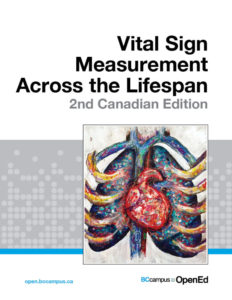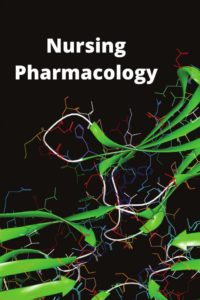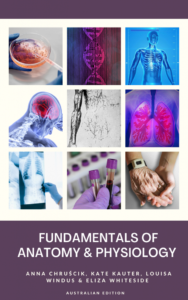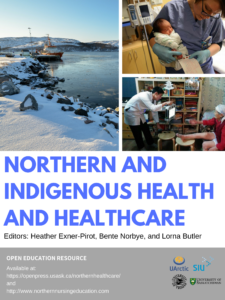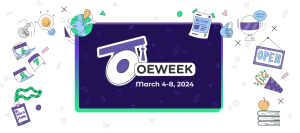The Pressbooks Directory is home to thousands of Open Educational Resources (OER) that run the gamut across academic disciplines. We regularly see new releases and are consistently blown away by the expertise and quality on display. Many of these include content that would not be possible in a traditional textbook—interactive elements like flashcards and videos, known as H5P content. Some are adaptations of existing open textbooks, tailored for different regions or specific curricula. These kinds of innovations and collaborations are exciting for us and represent incredible opportunities to make education more immersive and accessible. To show you exactly what we mean, we’ve chosen a handful of textbooks that we think do an excellent job of showcasing the benefits of OER. In honor of the healthcare workers who have been working tirelessly throughout the pandemic, and in light of the recent boom in the field of nursing, we’ve chosen to highlight five textbooks for nursing education. These books can be downloaded in a wide variety of formats for your convenience, although the webbook will provide the best experience due to its rich interactive content. If you have access to Pressbooks Create through your institution, you can easily clone these books and adapt them for your specific classroom.
Introduction to Communication in Nursing
Edited by Jennifer Lapum, Oona St-Amant, Michelle Hughes, and Joy Garmaise-Yee
Communication is an essential skill in many fields—particularly so in nursing, where the outcome of poor communication can be severe. This textbook will help prepare nursing students for communicating with patients and covers such topics as talking to young children, cultural and developmental considerations, trauma-informed and anti-racist approaches, and non-verbal communication strategies. This introduction begins by providing an overview of some basic models of communication and the theory behind how we process communication. It then outlines proper approaches to therapeutic communication and interviewing as they apply to nurses. Nurses must also communicate effectively with other healthcare workers and staff, which is why the last third of the textbook focuses on interprofessional communication, covering topics like interpersonal communication, conflicts, harassment, communication resources, and self-reflection.
Introduction to Communication in Nursing features attractive formatting with chapter summaries and a glossary. Each chapter ends with a self-assessment quiz for students to test their understanding of the material. This textbook was supported and funded by the Ryerson University Faculty of Community Services Publication Grant.
Vital Sign Measurement Across the Lifespan – 2nd Canadian Edition
Jennifer L. Lapum, Margaret Verkuyl, Wendy Garcia, Oona St-Amant, and Andy Tan
Measuring and tracking vital signs over time can reveal significant problems or changes in a person’s overall health and is an essential part of any healthcare worker’s education. This textbook is designed to help students of nursing and other health-related programs “develop best practices in vital sign measurement.” Students will learn about “various vital signs including temperature, pulse, respiration, blood pressure, and oxygen saturation.” Featuring 122 H5P elements, this textbook offers a media-rich, interactive approach, including videos, self-assessment quizzes, and other exercises to immerse students in the material. Each chapter features a chapter summary and printable flashcards.
Whereas the 1st Canadian Edition was funded by eCampusOntario, this 2nd Canadian Edition, with its H5P activities, was funded by an OER Grant provided by BCcampus Open Education. This is an excellent example of the collaborative nature of OER, where different institutions can build upon each other’s work.
Nursing Pharmacology
Chippewa Valley Technical College
Nursing Pharmacology is designed for first-year nursing students. It explains the basic concepts of pharmacology, with topics ranging from laws and ethics to a variety of medication classes. The textbook features helpful design elements such as key terms in bold, links to external resources, and a nice use of colors, formatting, animations, tables, and a glossary. It also contains 43 H5P elements, including videos and self-assessment quizzes.
This text brought together 200 developers and was sponsored by the US Department of Education Open Textbook Pilot grant. While it was designed specifically for the Wisconsin Technical College System (WTCS) statewide nursing curriculum, its Creative Commons licensing allows it to be freely adapted for use in other regions as well.
Fundamentals of Anatomy and Physiology
Anna Chruścik, Kate Kauter, Louisa Windus, and Eliza Whiteside
Fundamentals of Anatomy and Physiology is another great example of how open books can be adapted to fit local contexts. Based on Anatomy and Physiology, this adaptation has been tailored for Australian students and offers “an Australian perspective on the fundamentals of anatomy and physiology along with career perspectives, with content especially re-worked for Australian students.” It adds interactive quizzes, appendices, and a glossary. It also features section reviews, review questions, and critical thinking questions after each section. The book is organized by systems of the body and covers the cardiovascular, lymphatic, respiratory, muscle, nervous, and endocrine systems, and more.
Anatomy and Physiology was also adapted as Anatomy & Physiology for Oregon State, with revised content and artwork. A look at the three texts illustrates how the same content can be repurposed in a multitude of ways.
Northern and Indigenous Health and Healthcare
Heather Exner-Pirot, Bente Norbye, and Lorna Butler
Cultural and geographic circumstances can present a unique set of challenges for healthcare providers. Northern and Indigenous Health and Healthcare offers a perspective not typically represented in more commonly taught health sciences education. Students can expect to better understand those unique challenges, identify the “social, environmental and cultural aspects of a community that inform and impact care needs,” explore the “similarities and differences in northern healthcare across the circumpolar region,” and more. The textbook features a clean, minimalist design with many tables and links to external resources.
Northern and Indigenous Health and Healthcare was produced as an initiative of the University of the Arctic Thematic Network (TN) on Northern Nursing Education and made available through the University of Saskatchewan.
Find more open books like these in our curated healthcare collection of books created by Pressbooks users.
This post has been updated to reflect a name change with the Pressbooks product Pressbooks Create (previously known as Pressbooks Authoring & Editing platform). Learn more about our products.



